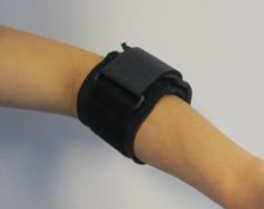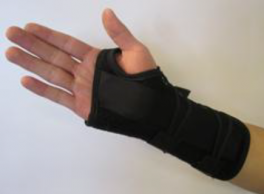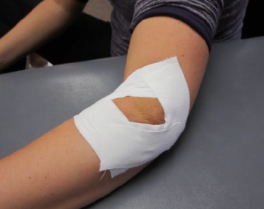Lateral Epicondyle Tendinopathy Toolkit: Section H - Braces, Splints, and Taping
Counterforce Brace[edit | edit source]
|
Figure 1 |
Wrist Splint[edit | edit source]
|
Figure 2 |
Diamond Taping Technique (Vicenzino et al 2003[2])[edit | edit source]
|
Figure 3 |
References[edit | edit source]
- ↑ Meyer NJ, Walter F, Haines B, Orton D, Daley RA. Modeled evidence of force reduction at the extensor carpi radialis brevis origin with the forearm support band. J Hand Surg [Am] 2003; 28:279-87.
- ↑ Vicenzino B, Brooksbank J, Minto J, Offord S, Paungmali A. Initial effects of elbow taping on pain-free grip strength and pressure pain threshold. Journal of Orthopaedic & Sports Physical Therapy. Jul 2003; 33(7): 400-7.









